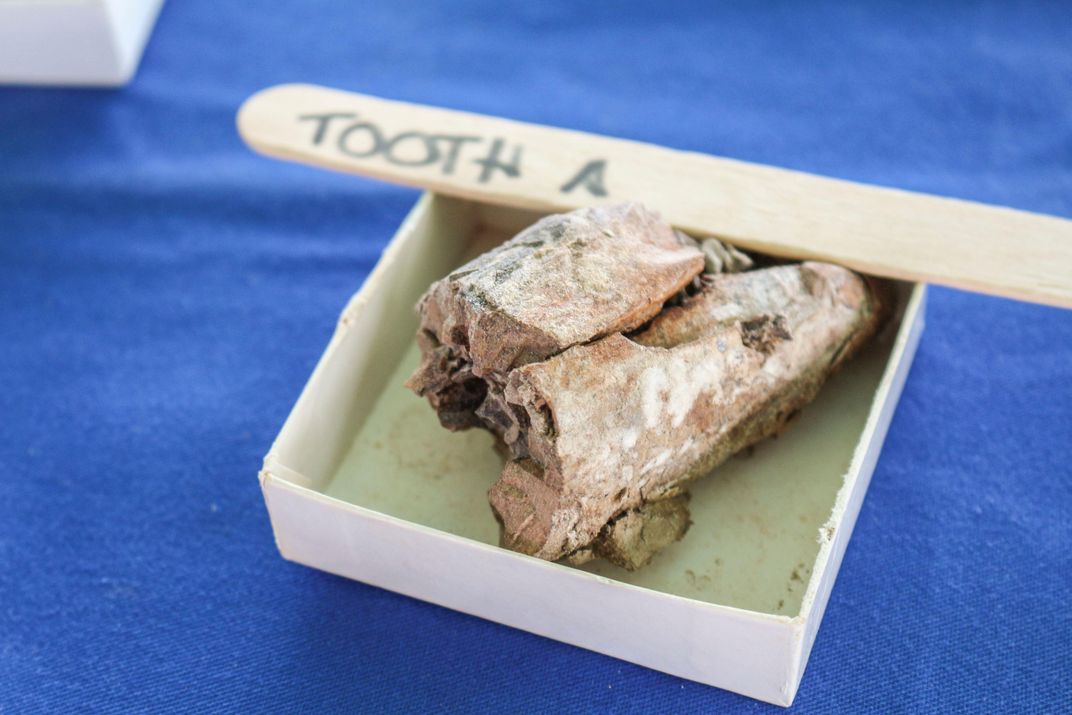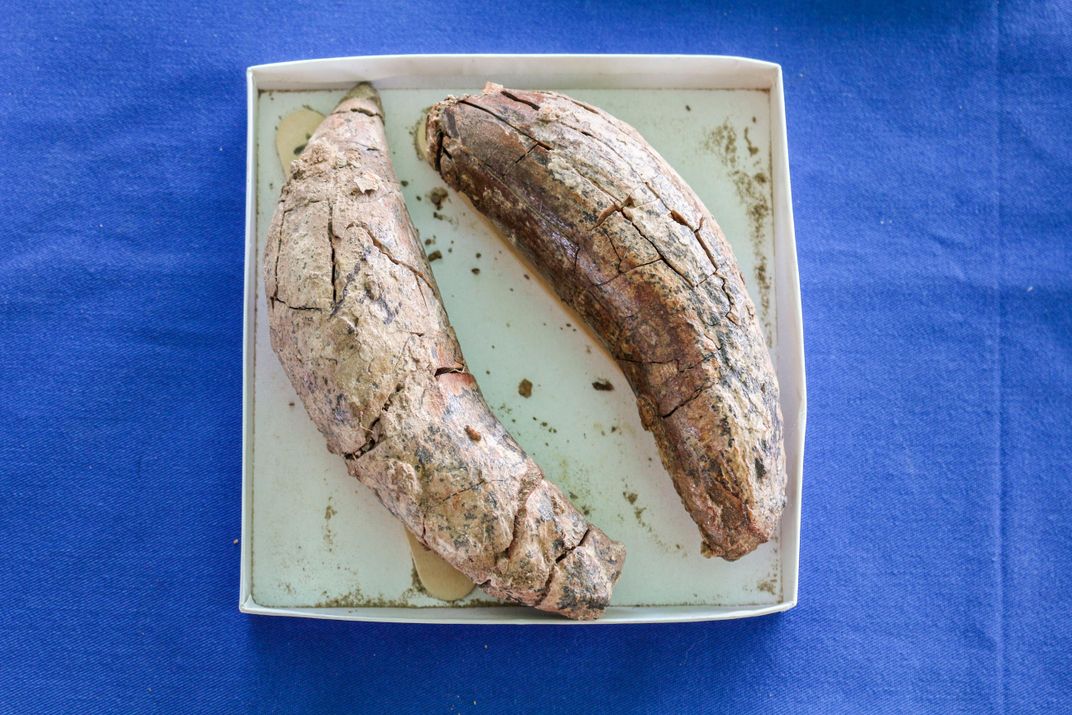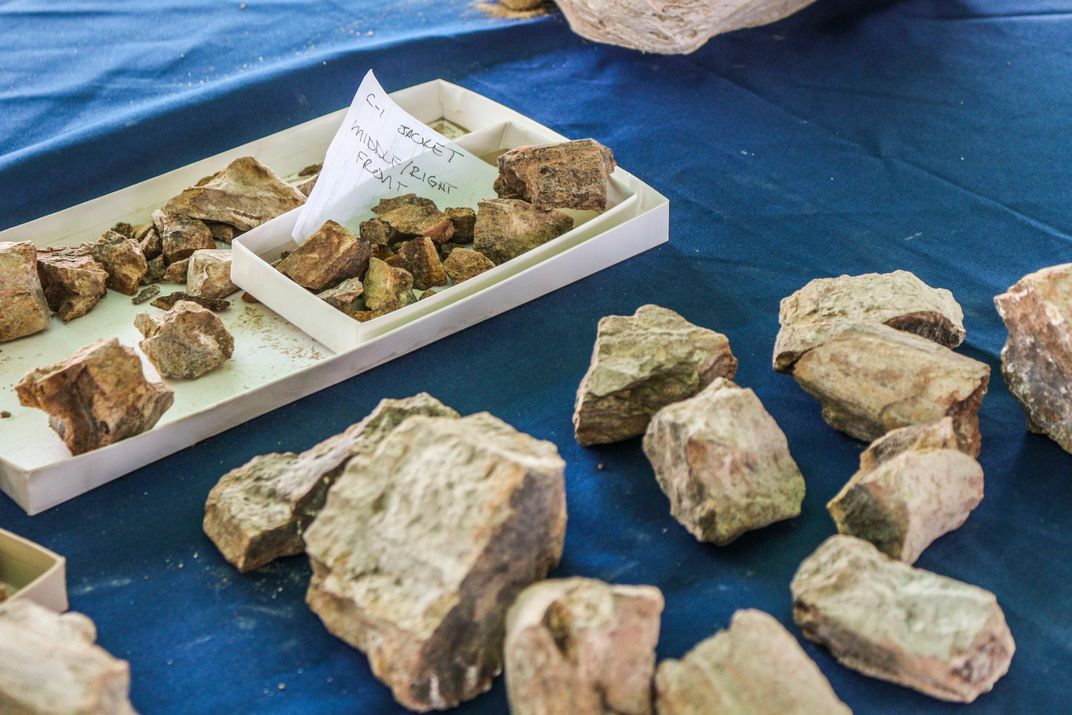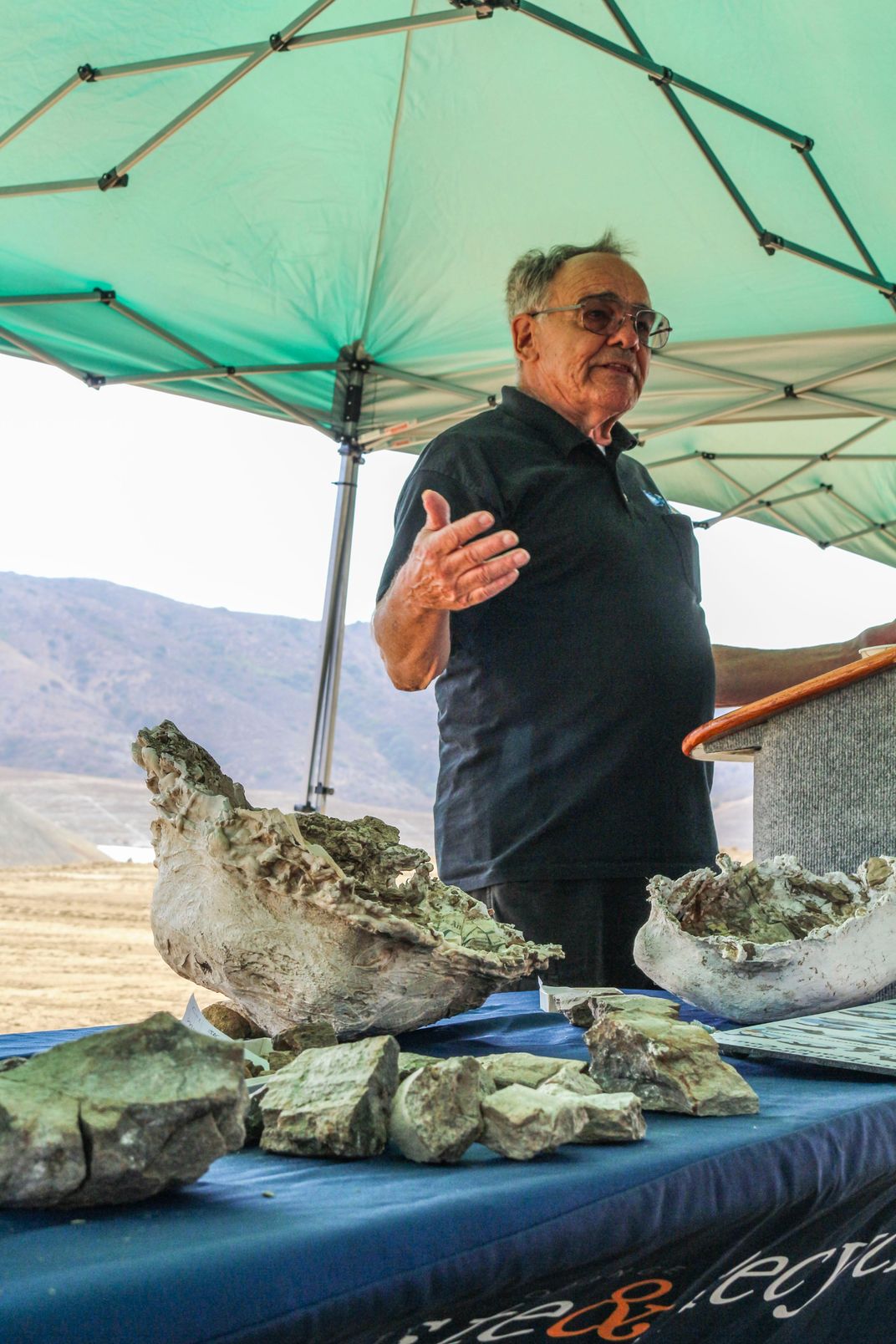Landfill Surprises Scientists With 12-Million-Year-Old Whale Fossils
The fossilized remains of a sperm whale were discovered in a newly cleared area of an Orange County landfill
A landfill on a hillside might not seem like a promising place to find fossils, but in Irvine, that's exactly where the remains of marine organisms—shark teeth, barnacles and more— have emerged over the years. But the latest discovery has scientists excited.
"I was walking down this hillside. I found a bone outcropping. I followed it and there was more bone and more bone, and then the teeth," paleontologist Melissa Macias tells Matt Morrison of the Los Angeles Times. "I knew that it was something big, something exciting. I didn't really know what it was at the time."
Macias works with a Sanata Ana engineering contractor. The fossilized bones she spotted ended up being parts of a skull, a jawbone, a flipper and 18 teeth from a sperm whale that swam through ancient oceans some 10 to 12 million years ago.
At that time, the site of the Frank R. Bowerman Landfill, which today is nearly 1,300 feet above sea level, would have been under the waters of a warm sea. The sperm whale must have died near that ancient shoreline and mired in mud. Later, geological processes would raise the land up thousands of feet, reports Aaron Orlowski of the Orange County Register.
"Normally when you find whales, it's an isolated rib or a vertebrate," Marcias tells the Register. If this specimen were complete, it would have been around 40 feet long.
"That's the biggest sperm whale we've found in the country," says Jere Lipps, director of the Cooper Center, a partnership between Orange County Parks and Cal State Fullerton. He tells the Register that today sperm whales are bigger—reaching lengths up to 60 feet. Cooling ocean waters over millennia ramped up ocean circulation and consequently increased upwelling, or the movement of nutrient-rich water from the deep ocean into water near the shore. That change brought more oceanic plankton into the picture and allowed whales to grow bigger and diversify.
In a press release from OC Waste and Recycling, Lipps explains that Orange County is rich with evidence of the history of whales. "The Southern California ocean has always been a good place for whales to live," he adds. "The fossils we are looking at today show that the largest toothed whales also lived in Orange County waters in the past (as they do today), hence are important additions to the whale record of our county."
Finds at the landfill aren't unheard off because as the landfill expands, more of the hillside is excavated and examined for fossils before being put to use. “Construction is a real boon for paleontology because it opens up large areas we would never see,” says Mark Roeder, a senior paleontologist at Psomas, the same engineering contractor company that employs Macias. “A lot of times the bones are well preserved because they’re not at the surface where they would weather. They’re buried.”
In another example, road construction uncovered a stunning collection of whale and other marine mammal fossils in Chile, evidence of a mass standings possibly caused by toxic algal blooms between six and nine million years ago.
The Orange County fossils will be studied at the Cooper Center, and after they have been cleaned some will be on display at the Bowerman landfill office, Orlowski reports. They may reveal more about the whales that once lived off the coast of Southern California and the environment they called home. And they certainly will provide fodder for the imagination of people who come to visit them.






